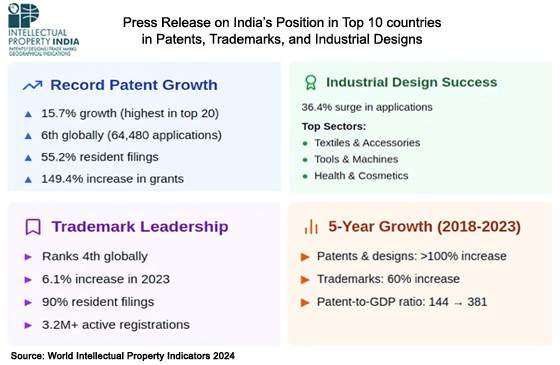7667766266
enquiry@shankarias.in
India secures position in top 10 countries in Patents, Trademarks, and Industrial Designs as per WIPO 2024 Report.

Reference